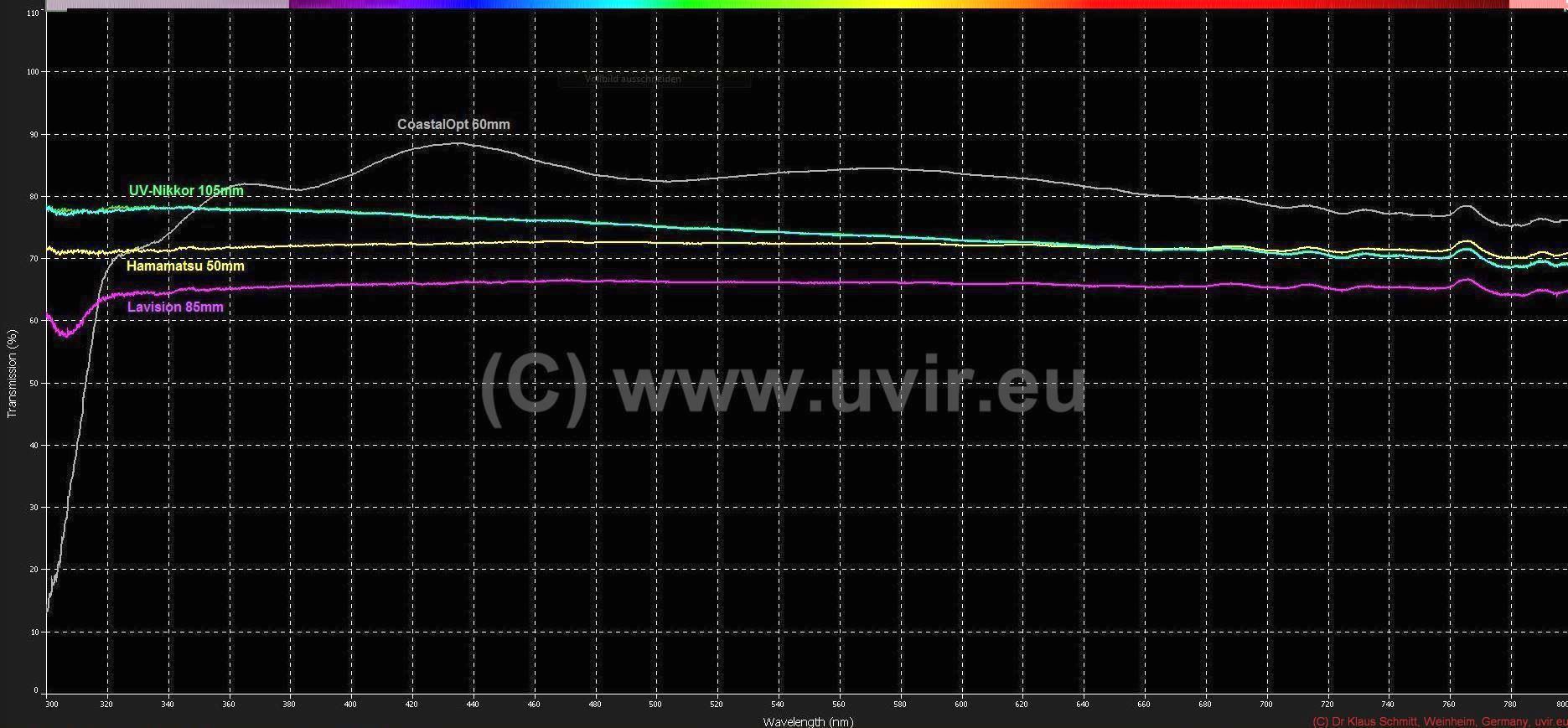So today my first post in 2021 about some UV-VIS-NIR measurements of some highly specialized lenses, which were specifically developed for reflected ultraviolet (UV) photography.
Usually a photographic lens should reproduce visible images, which is the wavelength band of about 400-700nm. This is why lens makers apply a special multicoating (aside from achieving higher light transmission), which usually blocks light outside this visible waveband. For biological reflected UV photography however, the UV-A band (300 - 400nm) is the interesting one. So using such a modern UV lens and that (de facto "standard" UV transmitting) Baader U-filter will work very well together, if both lens + filter have a high enough transmission. Culprit is, that coating for such a wide range is tricky, so quite a few of those lenses are still uncoated.
Here now I have used my UV-VIS-NIR spectrometer system consisting of a stabilized Xenon light source connected with a quartz fiber to a quartz-fluorite condensor which generates a fine parallel output ray shining through the lens to be tested and a receiving Spectralon (R) coated integrating sphere which captures all the light of that diverging beam exiting the measured lens and transmits this via a quartz fiber to the digital spectrometer.
The following lenses have been measured (links lead to my macrolenses site with lens data):
- CoastalOpt (Jenoptik) f4 / 60mm UV-VIS-NIR Macro Apo (Nikon-F mount)
- UV-Nikkor f4.5 / 105mm (Nikon-F mount)
(identical to the RAYFACT f4.5 105mm sold by Nikon TOCHIGI)
- Lavision f2.8 / 85mm UV (Nikon-F mount)
- Hamamatsu A4869 f3.5 / 50mm (c-mount)
[click on image to see a larger one]
All these lenses show a rather high UV transmisison, the CoastalOpt 60mm especially, as it seems to have a modern BBAR coating, but its downside is that its transmission only starts from about 320nm onwards, suitable for UV-A photography for biologic studies, but less suitable for technical studies like combustion analysis etc. which demands a suitable transmission in the UV-B (also sometimes UV-C) range which the other three lenses are capable of, reaching down to about 200nm.
The Hamamatsu 50mm is a c-mount lens and covers 1" sensors, the Lavision 85mm covers APS-C format. UV-Nikkor 105mm and CoastOpt 60mm are full format lenses.
Just a remark, as a high UV transmission is a must for a suitable UV lens, but also good sharpness, high contrast, flare resistance, no hot-spots, etc. are requirements such a UV lens has to meet, and I have not jet mentioned an important point - focus shift. Most of these modern quartz-fluorite lenses have no or very little focus shift, but that depends on the wavelength range they are corrected for.
There ia a part II of this covering 85mm lenses for UV HERE
More info on this very interesting field may be found on my site http://www.pbase.com/kds315/uv_photos

